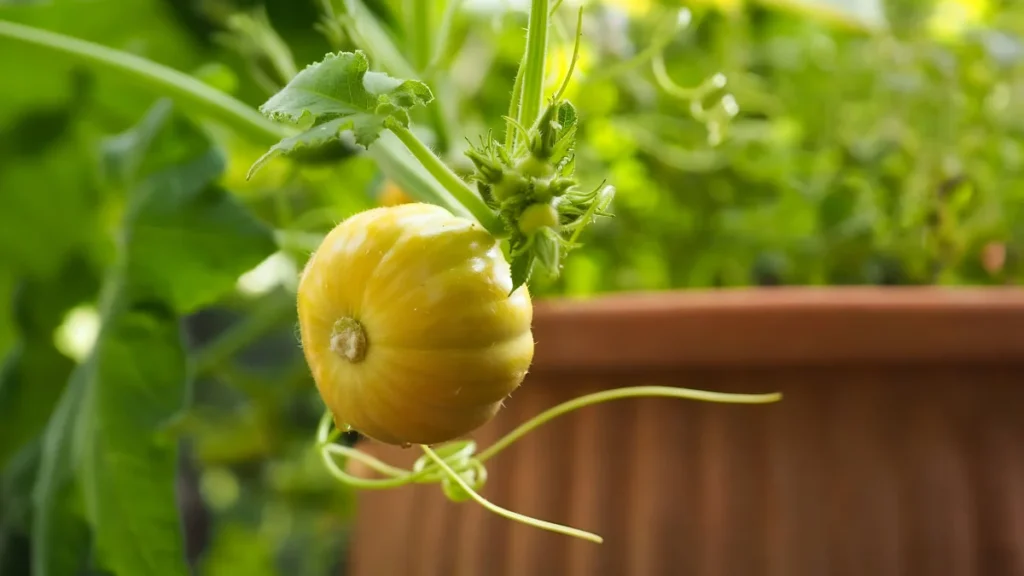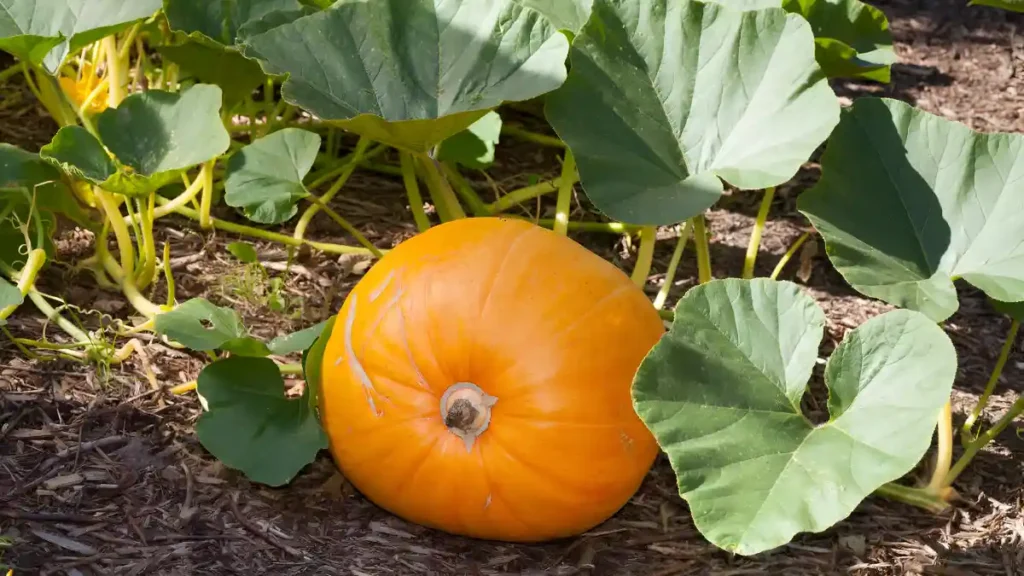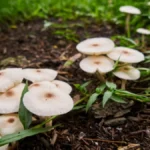learning how to grow pumpkins may be a gratifying experience. Discover how to grow pumpkins with ease, from sowing seeds to harvesting, and transform your yard into a pumpkin haven. Keep reading for tips on how to grow pumpkins in pots.
Here’s a comprehensive how to grow pumpkins in containers at home:
Selecting the Appropriate Container:
- Size: Choose a container with a minimum capacity of 15 gallons so that the roots of the pumpkin plant have enough room to spread.
- Depth: In order to allow for the deep root system of pumpkin plants, make sure the depth is at least 18 inches.
- Drainage: To avoid waterlogging, make sure the container has enough drainage by drilling holes in the bottom.
Choosing the Correct Type of Pumpkin:
- Container-Favorite Types: Compact or bush varieties that are good for growing in containers include “Small Sugar,” “Baby Boo,” and “Jack Be Little.”
- Think About Space: Choose a variety that fits the size of your container because some varieties require more room.
how to grow pumpkins With Soil and Planting:
- Soil Mix: Use an organic-rich, well-draining potting mix. For extra nutrients, combine aged manure or compost.
- Planting Seeds: Plant two to three pumpkin seeds in the center of the container, about an inch deep. After sprouting, select the healthiest seedling to keep.
- Spacing: If you are planting more than one seed, make sure they are at least 18 to 24 inches apart.

Hydration and Sunlight:
- Hydrating: Don’t overwater the soil; instead, keep it continuously damp. In between waterings, let the soil dry out a little bit. Water deeply.
- Sunlight: For best growth, place your container in an area that receives at least 6 to 8 hours of sunlight per day.
Upkeep and Cure:
- Support: As the vines grow, place a trellis or other support structure next to the container. Better airflow and the avoidance of rot can be achieved by gradually training the vines to climb the support.
- Fertilisation: Every two to three weeks, apply a liquid fertiliser diluted to half strength or a balanced, slow-release fertiliser.
- Pruning: To focus the plant’s energy on the main pumpkin, remove any extra foliage and tiny fruits.
Control of Pests and Diseases:
- Pests: Frequently check for pests such as cucumber beetles, squash bugs and aphids. Apply neem oil or organic insecticidal soap for control.
- Diseases: Pumpkins may be impacted by powdery mildew. Make sure the plant has adequate airflow, and apply fungicides if necessary.
Harvesting:
- Timeline: Depending on the cultivar, pumpkins can reach maturity in 75–100 days.
- Mature Signs: A hard rind, dried stem, and a rich, uniform colour are indicators of maturity. When you tap the pumpkin, it should sound hollow.
- Harvesting: Cut the pumpkin from the vine with pruning shears, leaving a few inches of stem attached.
Let’s learn more about pumpkin pollination:
Pumpkin pollination is critical for fruit development; bees and other pollinators transport pollen from male to female blooms. Male flowers bloom initially and produce pollen, whilst female flowers, recognized by a little fruit at the base, require pollination to mature into pumpkins. If pollinators are sparse, manual pollination with a tiny brush can guarantee success. Proper pollination promotes healthy pumpkin development, making it an important aspect in any profitable garden.
Certainly! If you’d like to learn more, please consider following our WhatsApp Channel, Facebook, Instagram, YouTube, Twitter, and Pinterest.
Conclusion:
Pumpkins grown in containers need careful attention to detail when it comes to soil composition, irrigation, sunlight exposure, and insect management. Even in a little space, you may have the satisfying pleasure of picking your own pumpkins at home with the correct upkeep and care. knowing how to grow pumpkins can transform your gardening experience and enhance your culinary creations.
A frequently asked question:
Q1: What time of year is ideal for growing pumpkins?
A2: When the soil has warmed to at least 60°F (15°C), which is after your area’s last frost date, plant pumpkins.
Q2: How to grow pumpkins from seeds in Minecraft?
A1: In Minecraft, you can plant pumpkin seeds by tilling a portion of farmland and then placing the seeds on the tilled soil. Make sure the space is hydrated and well-lit.
Q3: What is the best fertilizer kind for plants that grow pumpkins?
A3: Apply fertilizer that is evenly distributed in terms of nitrogen, phosphorus, and potassium. For pumpkins, a 10-10-10 or comparable ratio works well.
Q4: Do all pumpkin flowers turn into pumpkins?
A4: No, not every pumpkin bloom turns into a pumpkin. Only female flowers may grow into pumpkins, but they must first be pollinated; male flowers generate pollen and then wither.
Q5: How long do pumpkins take to grow?
A5: Pumpkins normally develop from seed to maturity in 90 to 120 days, depending on the cultivar. Smaller pumpkins mature more quickly, whereas larger ones take longer to fully develop.


